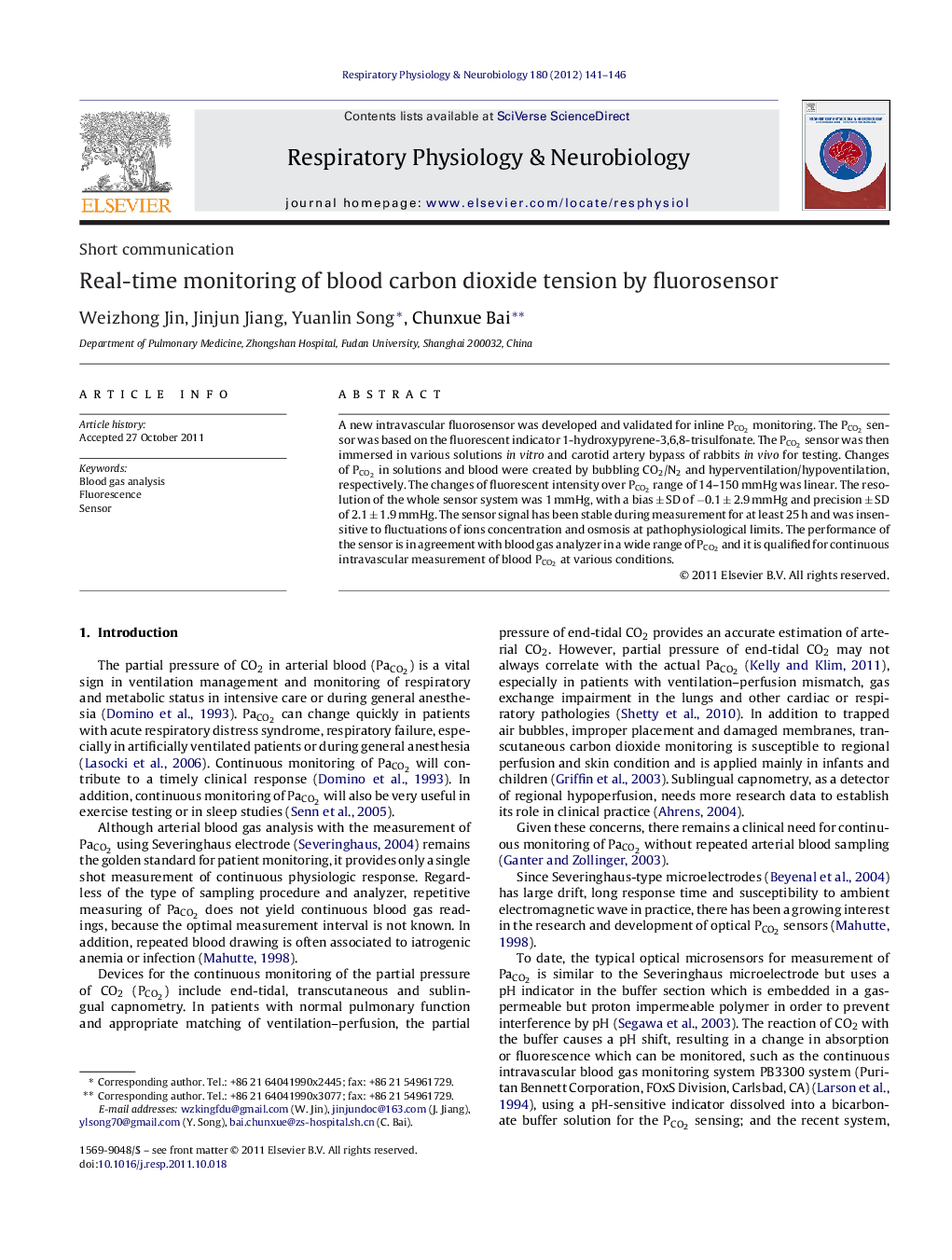| Article ID | Journal | Published Year | Pages | File Type |
|---|---|---|---|---|
| 2847408 | Respiratory Physiology & Neurobiology | 2012 | 6 Pages |
A new intravascular fluorosensor was developed and validated for inline PCO2PCO2 monitoring. The PCO2PCO2 sensor was based on the fluorescent indicator 1-hydroxypyrene-3,6,8-trisulfonate. The PCO2PCO2 sensor was then immersed in various solutions in vitro and carotid artery bypass of rabbits in vivo for testing. Changes of PCO2PCO2 in solutions and blood were created by bubbling CO2/N2 and hyperventilation/hypoventilation, respectively. The changes of fluorescent intensity over PCO2PCO2 range of 14–150 mmHg was linear. The resolution of the whole sensor system was 1 mmHg, with a bias ± SD of −0.1 ± 2.9 mmHg and precision ± SD of 2.1 ± 1.9 mmHg. The sensor signal has been stable during measurement for at least 25 h and was insensitive to fluctuations of ions concentration and osmosis at pathophysiological limits. The performance of the sensor is in agreement with blood gas analyzer in a wide range of PCO2PCO2 and it is qualified for continuous intravascular measurement of blood PCO2PCO2 at various conditions.
► We developed an optical PCO2 sensor to measure PaCO2 in real time. ► The sensor had a high resolution and precision. ► The sensor was stable and high-selective. It was suitable for continuous PaCO2 monitoring in animals.
